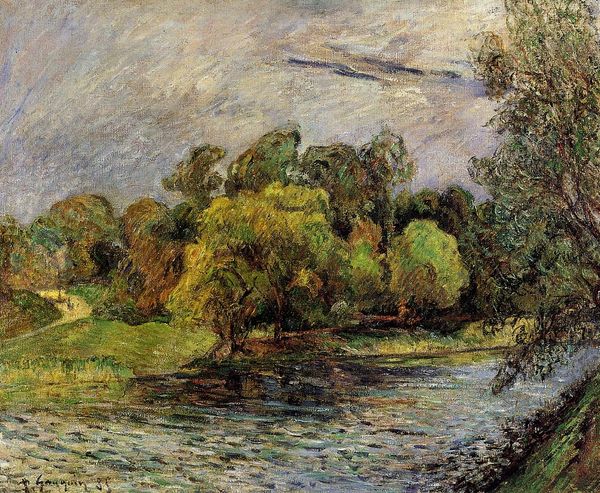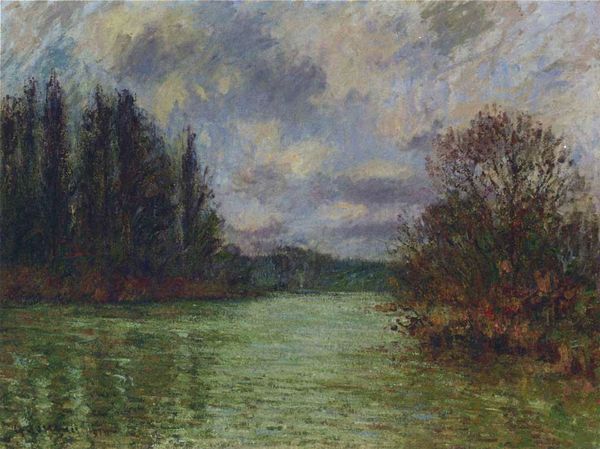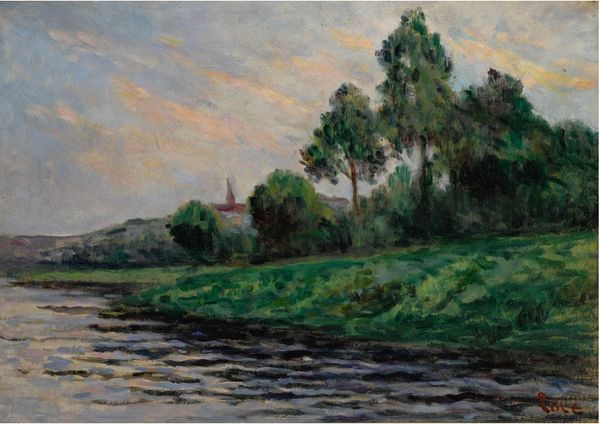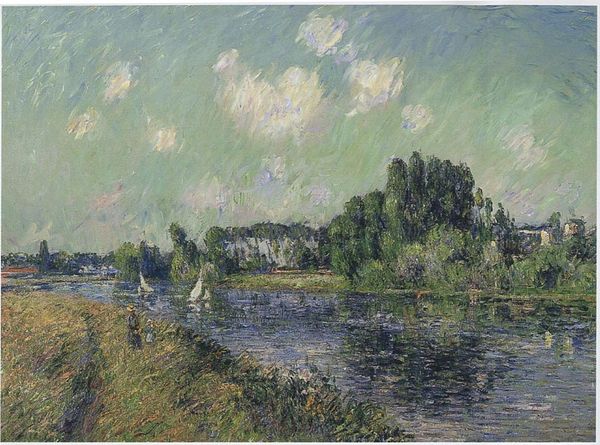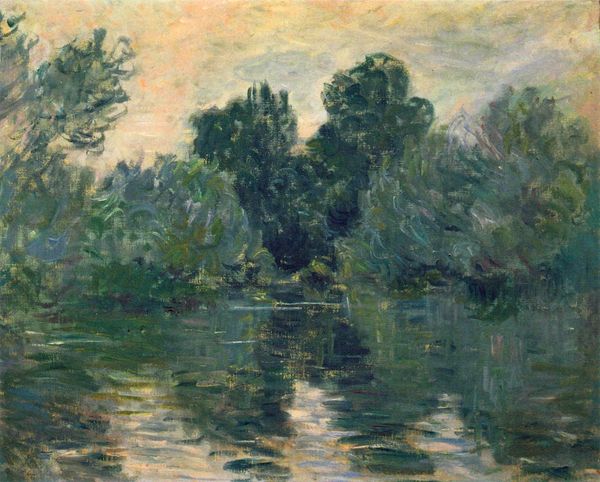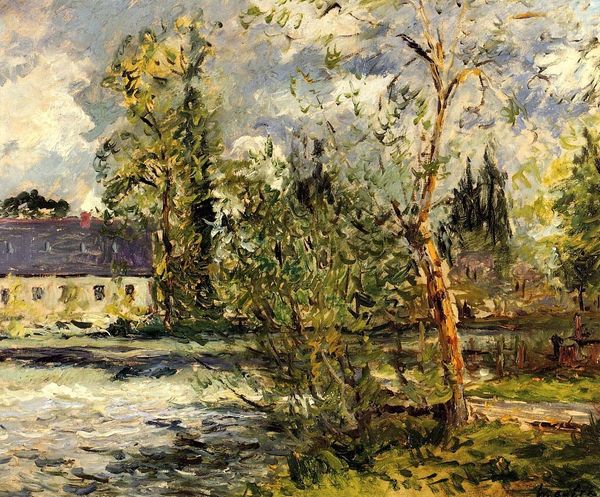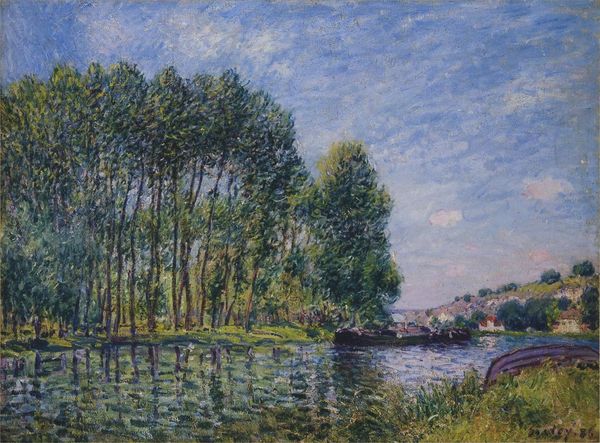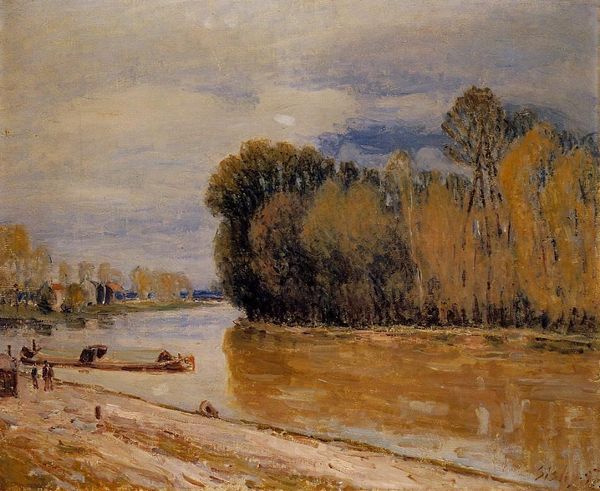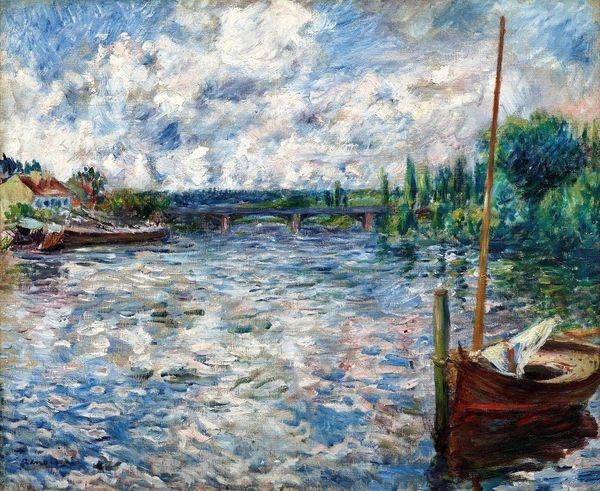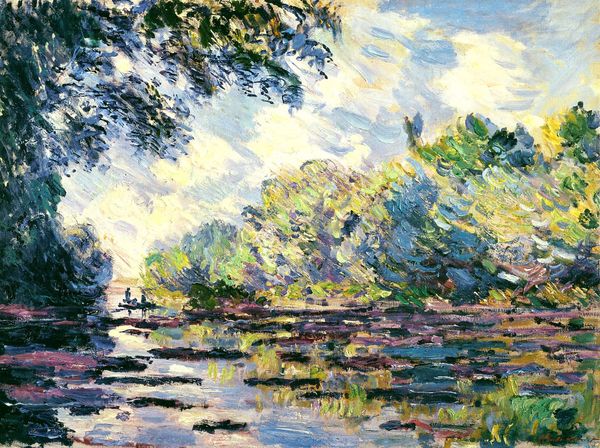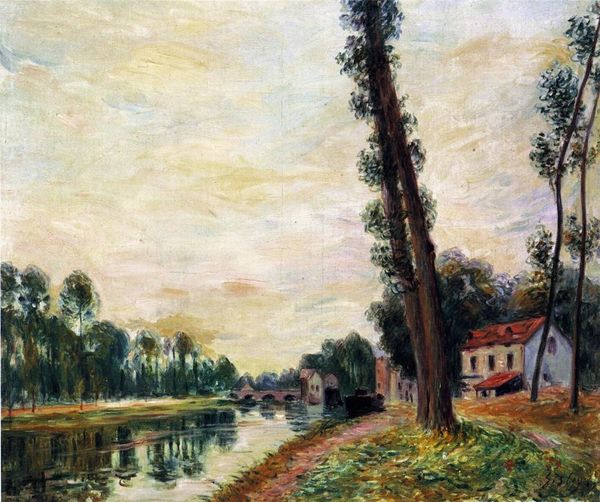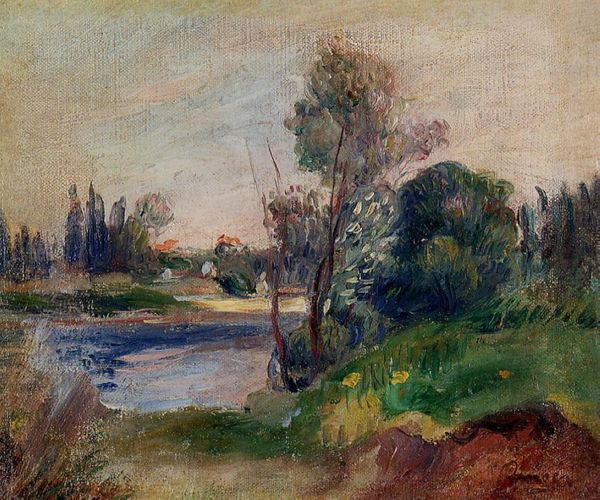
Dimensions: 46.5 x 55 cm
Copyright: Public domain
Editor: This is Eugène Boudin’s "River near Abbeville," painted in 1894. I'm struck by the tranquil, almost melancholic mood it evokes. It looks like it was painted outside, as the light feels so real. What story can you tell about it? Curator: Boudin, often associated with the Impressionists, captured fleeting moments of modern life through landscape. This particular piece exemplifies the rise of plein-air painting and its connection to shifting social values. Note the subtle way he’s represented the emerging industrial influence—small buildings are beginning to emerge along the shore. Editor: Interesting. So you see it reflecting social changes of the time? The early stages of industry and expansion? Curator: Precisely. Think about the public’s changing relationship to nature, driven by industrialisation and urbanization. Artists like Boudin offered accessible scenes of leisure, in direct contrast to the grit and grime of city life. Did this escapism extend to the working class, or did it serve more as an aesthetic for the bourgeoisie? Editor: That's a great point; access to such scenes would have likely been dictated by class. So the painting then could represent that divide too? Curator: Absolutely. The consumption and understanding of landscape painting becomes a reflection of societal strata. Boudin wasn’s merely representing a place; he's framing a perspective shaped by socio-economic forces. Editor: I never considered how a landscape could speak to those tensions! It highlights how art both reflects and is shaped by history and social context. Thanks! Curator: It is through these perspectives we create dialogues that truly enrich how art is engaged with publicly, shedding light on the intersection of visual culture, social dynamics, and power structures.
Comments
No comments
Be the first to comment and join the conversation on the ultimate creative platform.
